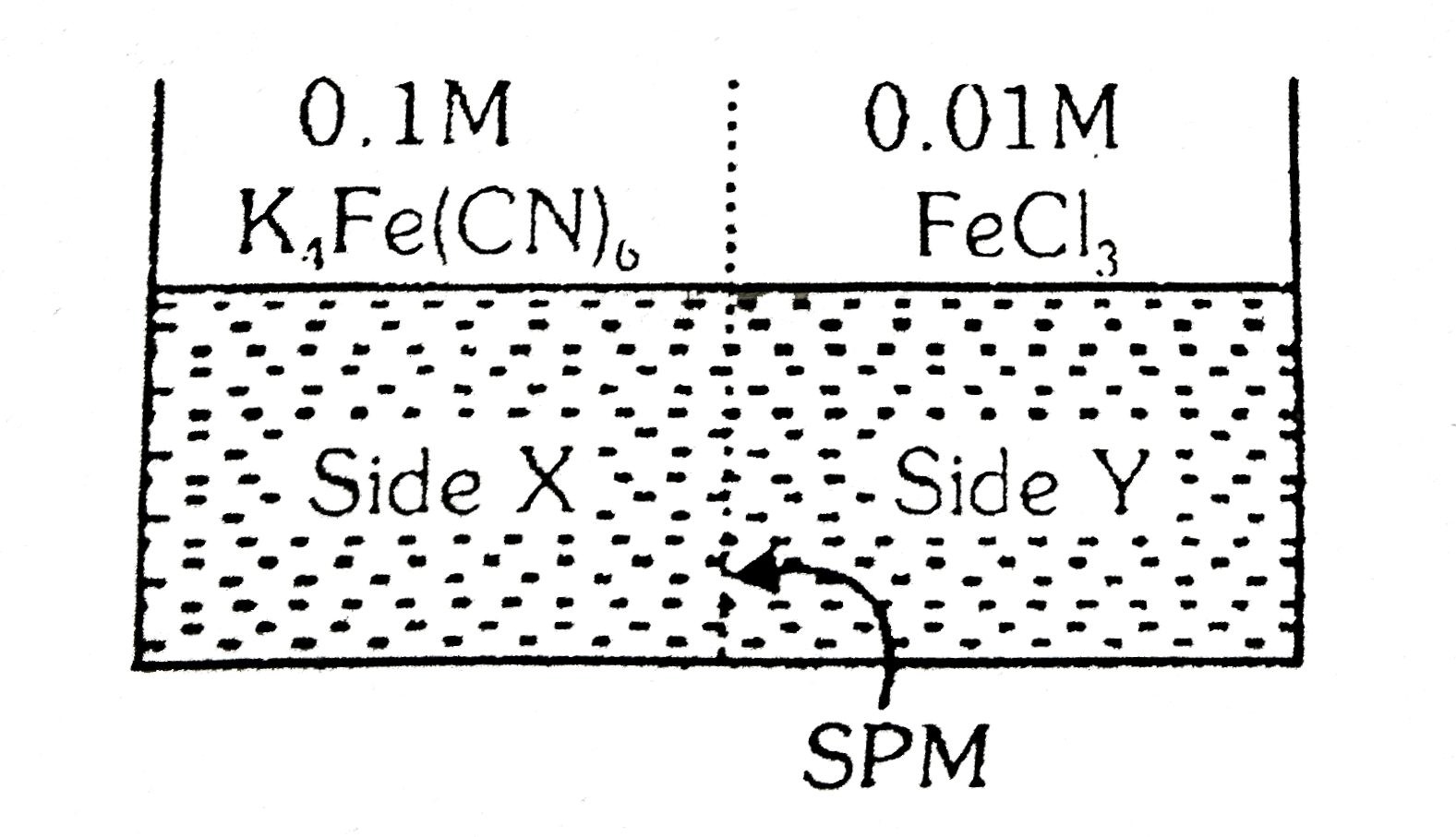FeCl3 on reaction with K4[Fe(CN)6] in aq. Solution gives blue colour. These are separated by a semipermeable membrane PQ as shown. Due to osmosis there is-
![FeCl(3) on reaction with K(4)[Fe(CN)(6)] in aq. Solution gives blue colour. These are separated by a semipermeable membrane PQ as shown. Due to osmosis there is-](https://d10lpgp6xz60nq.cloudfront.net/physics_images/RES_PHY_CHM_V01_XII_C02_E01_159_Q01.png)
A
blue colour formation in side X
B
blue colour formation in side Y
C
blue colour formation in both of the sides X and Y
D
no blue colour formation
Video Solution
Text Solution
The correct Answer is:D
|
Answer
Step by step video, text & image solution for FeCl_(3) on reaction with K_(4)[Fe(CN)_(6)] in aq. Solution gives blue colour. These are separated by a semipermeable membrane PQ as shown. Due to osmosis there is- by Chemistry experts to help you in doubts & scoring excellent marks in Class 12 exams.
Updated on:21/07/2023Topper's Solved these Questions
- LIQUID SOLUTIONSBOOK - GRB PUBLICATIONCHAPTER - LIQUID SOLUTIONSEXERCISE - 15
10 Videos
- LIQUID SOLUTIONSBOOK - GRB PUBLICATIONCHAPTER - LIQUID SOLUTIONSEXERCISE - 16
10 Videos
- LIQUID SOLUTIONSBOOK - GRB PUBLICATIONCHAPTER - LIQUID SOLUTIONSEXERCISE - 54
2 Videos
- IONIC EQUILIBRIUMBOOK - GRB PUBLICATIONCHAPTER - IONIC EQUILIBRIUMEXERCISE - All Questions
526 Videos
- METALLUGYBOOK - GRB PUBLICATIONCHAPTER - METALLUGYEXERCISE - Subjective type
1 Videos
Similar Questions
Knowledge Check
FeCI3 on reaction with K4[Fe(CN)6] in aqueous solution gives blue colour.

These are separated by a semipermeable membrane AB as shown. Due to osmosis there is:Ablue colour formation in side XBblue colour formation in side YCblue colour formation in both of the sides X and YDno blue colour formation.FeCl3 on reaction with K4[Fe(CN)6] in aqueous solution gives blue colour. These are separated by a semi-permeable membrane AB as shown. Due to osmosis, there is
 ABlue colour formation in side X.BBlue colour formation in side Y.CBlue colour formation in both of side X and Y.DNo blue colour formation.
ABlue colour formation in side X.BBlue colour formation in side Y.CBlue colour formation in both of side X and Y.DNo blue colour formation.X3Y2(i=5) when reacted with A2B3(i=5 in aqueous solution gives brown colour. These are separated by a semipermeable membrane AB as shown. Due to oxmosis there is :
 Abrown colour formation in side XBbrown colour formation in side YCformation in both the sides X and YDno brown colour formation
Abrown colour formation in side XBbrown colour formation in side YCformation in both the sides X and YDno brown colour formation
